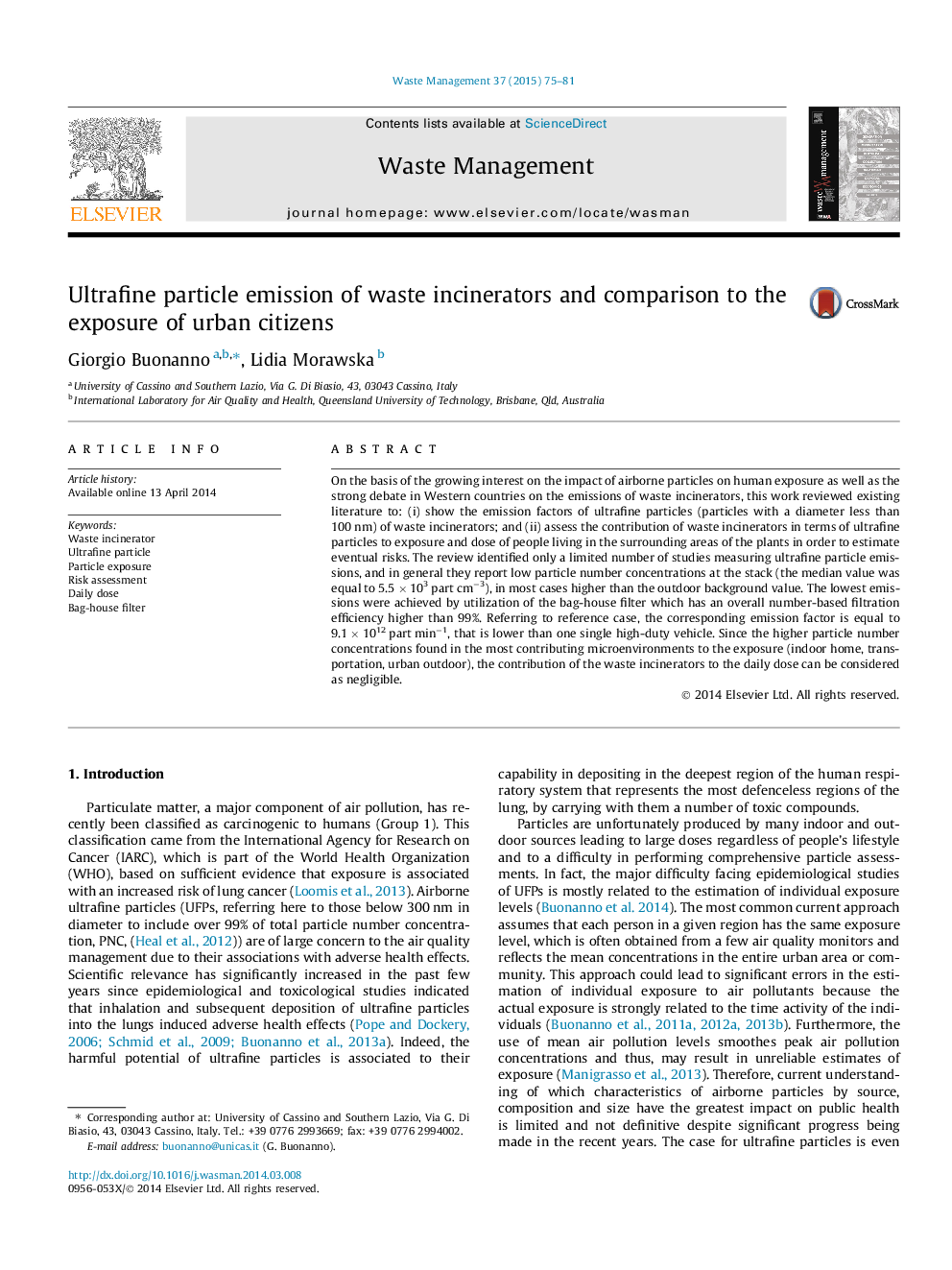| Article ID | Journal | Published Year | Pages | File Type |
|---|---|---|---|---|
| 4471446 | Waste Management | 2015 | 7 Pages |
•We reviewed the emission factors of ultrafine particles (UFPs) of waste incinerators (WtE).•An assessment of UFP contribution of WtEs to exposure and dose of people was performed.•A low particle number concentrations at the stack of WtEs (5.5 × 103 part cm−3) was found.•The low emissions were achieved by utilization of the bag-house filters.•The contribution of WtEs to the daily dose can be considered as negligible.
On the basis of the growing interest on the impact of airborne particles on human exposure as well as the strong debate in Western countries on the emissions of waste incinerators, this work reviewed existing literature to: (i) show the emission factors of ultrafine particles (particles with a diameter less than 100 nm) of waste incinerators; and (ii) assess the contribution of waste incinerators in terms of ultrafine particles to exposure and dose of people living in the surrounding areas of the plants in order to estimate eventual risks. The review identified only a limited number of studies measuring ultrafine particle emissions, and in general they report low particle number concentrations at the stack (the median value was equal to 5.5 × 103 part cm−3), in most cases higher than the outdoor background value. The lowest emissions were achieved by utilization of the bag-house filter which has an overall number-based filtration efficiency higher than 99%. Referring to reference case, the corresponding emission factor is equal to 9.1 × 1012 part min−1, that is lower than one single high-duty vehicle. Since the higher particle number concentrations found in the most contributing microenvironments to the exposure (indoor home, transportation, urban outdoor), the contribution of the waste incinerators to the daily dose can be considered as negligible.
